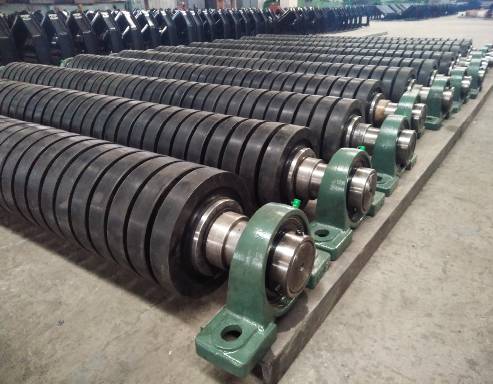 Afrikaans
Afrikaans  Albanian
Albanian  Amharic
Amharic  Arabic
Arabic  Armenian
Armenian  Azerbaijani
Azerbaijani  Basque
Basque  Belarusian
Belarusian  Bengali
Bengali  Bosnian
Bosnian  Bulgarian
Bulgarian  Catalan
Catalan  Cebuano
Cebuano  Corsican
Corsican  Croatian
Croatian  Czech
Czech  Danish
Danish  Dutch
Dutch  English
English  Esperanto
Esperanto  Estonian
Estonian  Finnish
Finnish  French
French  Frisian
Frisian  Galician
Galician  Georgian
Georgian  German
German  Greek
Greek  Gujarati
Gujarati  Haitian Creole
Haitian Creole  hausa
hausa  hawaiian
hawaiian  Hebrew
Hebrew  Hindi
Hindi  Miao
Miao  Hungarian
Hungarian  Icelandic
Icelandic  igbo
igbo  Indonesian
Indonesian  irish
irish  Italian
Italian  Japanese
Japanese  Javanese
Javanese  Kannada
Kannada  kazakh
kazakh  Khmer
Khmer  Rwandese
Rwandese  Korean
Korean  Kurdish
Kurdish  Kyrgyz
Kyrgyz  Lao
Lao  Latin
Latin  Latvian
Latvian  Lithuanian
Lithuanian  Luxembourgish
Luxembourgish  Macedonian
Macedonian  Malgashi
Malgashi  Malay
Malay  Malayalam
Malayalam  Maltese
Maltese  Maori
Maori  Marathi
Marathi  Mongolian
Mongolian  Myanmar
Myanmar  Nepali
Nepali  Norwegian
Norwegian  Norwegian
Norwegian  Occitan
Occitan  Pashto
Pashto  Persian
Persian  Polish
Polish  Portuguese
Portuguese  Punjabi
Punjabi  Romanian
Romanian  Russian
Russian  Samoan
Samoan  Scottish Gaelic
Scottish Gaelic  Serbian
Serbian  Sesotho
Sesotho  Shona
Shona  Sindhi
Sindhi  Sinhala
Sinhala  Slovak
Slovak  Slovenian
Slovenian  Somali
Somali  Spanish
Spanish  Sundanese
Sundanese  Swahili
Swahili  Swedish
Swedish  Tagalog
Tagalog  Tajik
Tajik  Tamil
Tamil  Tatar
Tatar  Telugu
Telugu  Thai
Thai  Turkish
Turkish  Turkmen
Turkmen  Ukrainian
Ukrainian  Urdu
Urdu  Uighur
Uighur  Uzbek
Uzbek  Vietnamese
Vietnamese  Welsh
Welsh  Bantu
Bantu  Yiddish
Yiddish  Yoruba
Yoruba  Zulu
Zulu Conveyor Belt Bends and Their Impact on Pulley Performance and Efficiency
Understanding Conveyor Bend Pulleys A Vital Component of Material Handling Systems
Conveyor systems play an essential role in the logistics and manufacturing sectors, enabling efficient transportation of materials from one location to another. Among various components that comprise these systems, bend pulleys hold a critical position. They facilitate the smooth and uninterrupted operation of conveyors, especially in applications where the system needs to change direction.
What is a Bend Pulley?
A bend pulley is a specially designed pulley installed in a conveyor system to redirect the conveyor belt. It is typically positioned at points where the belt needs to curve or turn, allowing for a reduction in the overall footprint of the conveyor setup and enabling efficient material handling in confined spaces. The bend pulley provides the necessary tension to the conveyor belt, helping maintain its alignment and operational efficiency.
Types of Bend Pulleys
Bend pulleys come in various sizes and designs, depending on the specific needs of the conveyor system. They can be categorized based on their position, functionality, and the materials from which they are constructed. Generally, the main types of bend pulleys are
1. Standard Bend Pulleys These are commonly used in many types of conveyor systems for general material handling applications.
2. Heavy-Duty Bend Pulleys Designed to handle heavy loads and high-stress environments, these pulleys are built using robust materials to endure substantial wear and tear.
3. Custom Bend Pulleys For specialized applications, custom bend pulleys can be designed to meet unique specifications and requirements.
Importance of Bend Pulleys in Conveyor Systems
conveyor bend pulley

Bend pulleys offer several critical advantages in conveyor operations
1. Space Optimization By allowing the conveyor system to change direction, bend pulleys enable efficient use of available space. This is particularly important in facilities with limited floor area.
2. Reduction of Belt Wear Properly functioning bend pulleys help to maintain the alignment of the conveyor belt, significantly reducing the chances of misalignment and associated wear and tear.
3. Enhanced Operational Efficiency Bend pulleys ensure a consistent tensioning mechanism in the conveyor system, leading to smoother operations and minimizing downtime caused by mechanical failures.
4. Maintenance and Durability Modern bend pulleys are designed for easy maintenance and long-term durability. They are often equipped with features like self-lubrication systems or anti-corrosion coatings, which enhance their lifespan and reduce maintenance efforts.
Installation and Maintenance Considerations
Proper installation and maintenance of bend pulleys are vital for their effective performance. When installing bend pulleys, it is crucial to ensure they are correctly aligned with the conveyor belt to prevent misalignment issues. Additionally, regular inspection and maintenance can significantly extend the life of the bend pulleys and the conveyor system as a whole. This includes checking for wear and damage, ensuring proper tension levels, and lubricating moving parts as necessary.
Conclusion
In conclusion, bend pulleys are indispensable components of conveyor systems, playing a key role in optimizing material handling processes. Their ability to facilitate direction changes while ensuring belt tension and alignment makes them essential for efficient conveyor design. Understanding the different types of bend pulleys, their importance, and maintenance requirements can help businesses maximize the performance and lifespan of their conveyor systems, ultimately leading to enhanced productivity and reduced operational costs. As industries continue to evolve, the role of bend pulleys will remain crucial in streamlining logistics and manufacturing operations.
-
Revolutionizing Conveyor Reliability with Advanced Rubber Lagging PulleysNewsJul.22,2025
-
Powering Precision and Durability with Expert Manufacturers of Conveyor ComponentsNewsJul.22,2025
-
Optimizing Conveyor Systems with Advanced Conveyor AccessoriesNewsJul.22,2025
-
Maximize Conveyor Efficiency with Quality Conveyor Idler PulleysNewsJul.22,2025
-
Future-Proof Your Conveyor System with High-Performance Polyurethane RollerNewsJul.22,2025
-
Driving Efficiency Forward with Quality Idlers and RollersNewsJul.22,2025





























